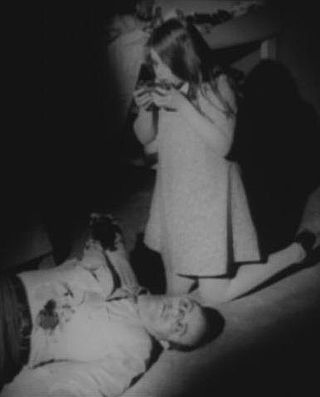Top Qs
Timeline
Chat
Perspective
Postmodern horror
Subgenre of film From Wikipedia, the free encyclopedia
Remove ads
Postmodern horror is a horror film related to the art and philosophy of postmodernism including self-awareness of certain cliches and tropes to the point of parody. Examples of this type of film include George A. Romero's Night of the Living Dead, Tobe Hooper's The Texas Chain Saw Massacre, John Carpenter's slasher film Halloween, and Wes Craven's Scream.

Remove ads
Background
Postmodern horror, which emerged in the turbulent 1960s and 1970s, is defined by several key characteristics. These include the disruption of everyday life through violence, the crossing and violation of boundaries, and a critique of rationality as a reliable framework. It also rejects traditional narrative closure, instead offering open-ended or unresolved storytelling. Additionally, it creates a confined experience of fear for the audience, fostering a sense of immersion.[1]
Examples of this include the famous "rules of surviving a horror movie" speech from Wes Craven's 1996 slasher film Scream and the self-aware characters (including the main protagonist) slowly realizing they're living the plot of one in the 1990 precursor There's Nothing Out There.[2][3][4][5]
Remove ads
Notable postmodern horror films
- Psycho (1960)[1]
- Spider Baby (1967)[6]
- Night of the Living Dead (1968)[7][1][8][9]
- Targets (1968)[1]
- The Texas Chain Saw Massacre (1974)[1][9]
- House (1977)[10]
- Halloween (1978)[1]
- Dawn of the Dead (1978)[11]
- Invasion of the Body Snatchers (1978)[12]
- The Brood (1979)[1]
- The Shining (1980)[13]
- The Evil Dead (1981)[14]
- The Howling (1981)[15][1]
- The Entity (1982)[1]
- The Thing (1982)[1]
- Videodrome (1983)[1]
- The Toxic Avenger (1984)[16]
- A Nightmare on Elm Street (1984)[1][9]
- Re-Animator (1985)[1]
- Fright Night (1985)[17]
- Chopping Mall (1986)[1]
- Henry: Portrait of a Serial Killer (1986)[1]
- Evil Dead II (1987)[18][14]
- Beetlejuice (1988)[19]
- Lady in White (1988)[1]
- Gremlins 2: The New Batch (1990)[20][21]
- Candyman (1992)[8]
- The Nightmare Before Christmas (1993)[22]
- Wes Craven's New Nightmare (1994)[17][23]
- From Dusk till Dawn (1996)[24]
- Scream (1996)[25][26][27][28][17][24]
- I Know What You Did Last Summer (1997)[29]
- Bride of Chucky (1998)[30]
- The Blair Witch Project (1999)[24]
- American Psycho (2000)[24]
- Final Destination (2000)[24]
- Scary Movie (2000)[29]
- Party Monster (2003)[31]
- Shaun of the Dead (2004)[24]
- Drag Me to Hell (2009)[24]
- The Cabin in the Woods (2012)[17][24]
- ParaNorman (2012)[32]
- Hotel Transylvania (2012)[33]
- The Final Girls (2015)[34]
- Get Out (2017)[35]
- Us (2019)[36]
- Midsommar (2019)[37]
- Last Night in Soho (2021)[38]
- Nope (2022)[39]
- Late Night with the Devil (2023)[40]
Remove ads
See also
References
Further reading
Wikiwand - on
Seamless Wikipedia browsing. On steroids.
Remove ads
